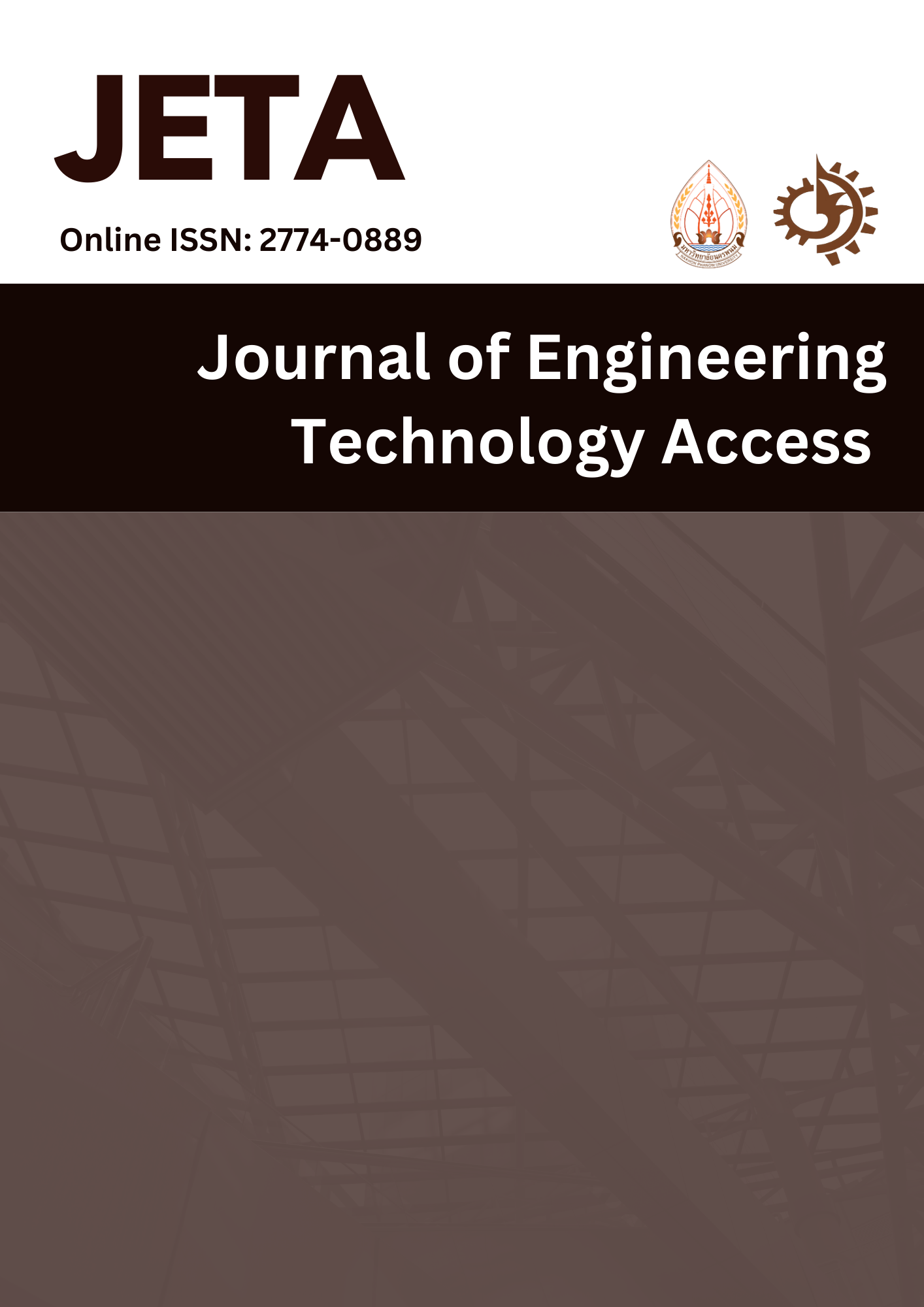อิทธิพลของกระบวนการเชื่อมต่อโครงสร้างจุลภาคและสมบัติทางกลของแนวเชื่อมพอกผิวแข็ง
Main Article Content
บทคัดย่อ
บทคัดย่อ
งานวิจัยนี้ประเมินกระบวนการเชื่อมพอกผิวแข็งประยุกต์ใช้กระบวนการเชื่อมแตกต่างกันสามกระบวนการ คือ กระบวนการเชื่อมแก๊สทังสเตนอาร์ค กระบวนการเชื่อมไฟฟ้า และกระบวนการเชื่อมลวดไส้ฟลักซ์ ที่ส่งผลต่อสมบัติทางกลของแนวเชื่อมและโครงสร้างจุลภาคของแนวเชื่อม การทดลองพบว่ากระบวนการเชื่อมแบบ GTAW ให้ค่าความแข็งสูงสุดและอัตราการสึกหรอต่ำสุด และจากการตรวจสอบโครงสร้างจุลภาคพบคาร์ไบด์เกิดขึ้นในแนวเชื่อมปริมาณสูงที่มีส่วนผสมของโมลิดินัมและทังสเตนทำให้มีค่าความแข็งสูงสุดสำหรับการทดลองนี้
Article Details

อนุญาตภายใต้เงื่อนไข Creative Commons Attribution-NonCommercial-NoDerivatives 4.0 International License.
เอกสารอ้างอิง
Crook, P., & Farmer, H. N. (1992). Friction and wear of hardfacing alloys. ASM International, ASM Handbook,, 18, 758-765.
Eyre, T. S., & Farrell, R. M. (1967). Friction and wear of engineering materials. Engineering Materials and Design, 10(9), 1323.
Hutchings, I., & Shipway, P. (2017). Tribology: friction and wear of engineering materials. Butterworth-heinemann.
Buchely, M. F., Gutierrez, J. C., Leon, L. M., & Toro, A. (2005). The effect of microstructure on abrasive wear of hardfacing alloys. wear, 259(1-6), 52-61.
Vazquez, C. R. (2000). Comportamiento frente al desgaste abrasivo de las aleaciones con tendencia a la formación de carburos aplicadas por soldadura. Mantenimiento: ingeniería industrial y de edificios, (134), 5-12.
Chatterjee, S., & Pal, T. K. (2003). Wear behaviour of hardfacing deposits on cast iron. Wear, 255(1-6), 417-425.
Pintaude, G., Tschiptschin, A. P., Tanaka, D. K., & Sinatora, A. (2001). The particle size effect on abrasive wear of high-chromium white cast iron mill balls. Wear, 250(1-12), 66-70.
Sin, H., Saka, N., & Suh, N. P. (1979). Abrasive wear mechanisms and the grit size effect. Wear, 55(1), 163-190.
Gåhlin, R., & Jacobson, S. (1999). The particle size effect in abrasion studied by controlled abrasive surfaces. Wear, 224(1), 118-125.
Mann, P. S., & Brar, N. K. (2015). Tribological aspects of agricultural equipments: a review. Int. Res. J. Eng. Technol, 2, 1704-1708.
Buchely, M. F., Gutierrez, J. C., Leon, L. M., & Toro, A. (2005). The effect of microstructure on abrasive wear of hardfacing alloys. wear, 259(1-6), 52-61.
Wu, W., & Wu, L. T. (1996). The wear behavior between hardfacing materials. Metallurgical and Materials Transactions A, 27, 3639-3648.
Coronado, J. J., Caicedo, H. F., & Gómez, A. L. (2009). The effects of welding processes on abrasive wear resistance for hardfacing deposits. Tribology International, 42(5), 745-749.
PRADEEP, G., RAMESH, A., & PRASAD, B. D. Comparative Study of Hardfacing of AISI 1020 Steel by Gas Welding and Tig Welding Processes. IOSR Journal of Engineering (IOSRJEN), 18-22.
Anameric, B., & Kawatra, S. K. (2006). Laboratory study related to the production and properties of pig iron nuggets. Mining, Metallurgy & Exploration, 23, 52-56.
Wang, X., Han, F., Liu, X., Qu, S., & Zou, Z. (2008). Microstructure and wear properties of the Fe–Ti–V–Mo–C hardfacing alloy. Wear, 265(5-6), 583-589.
Kashani, H., Amadeh, A., & Farhani, M. (2007). Improvement of wear resistance of hot working tool steel by hardfacing Part 1–Effect of microstructure and hardness. Materials science and technology, 23(2), 165-170.






